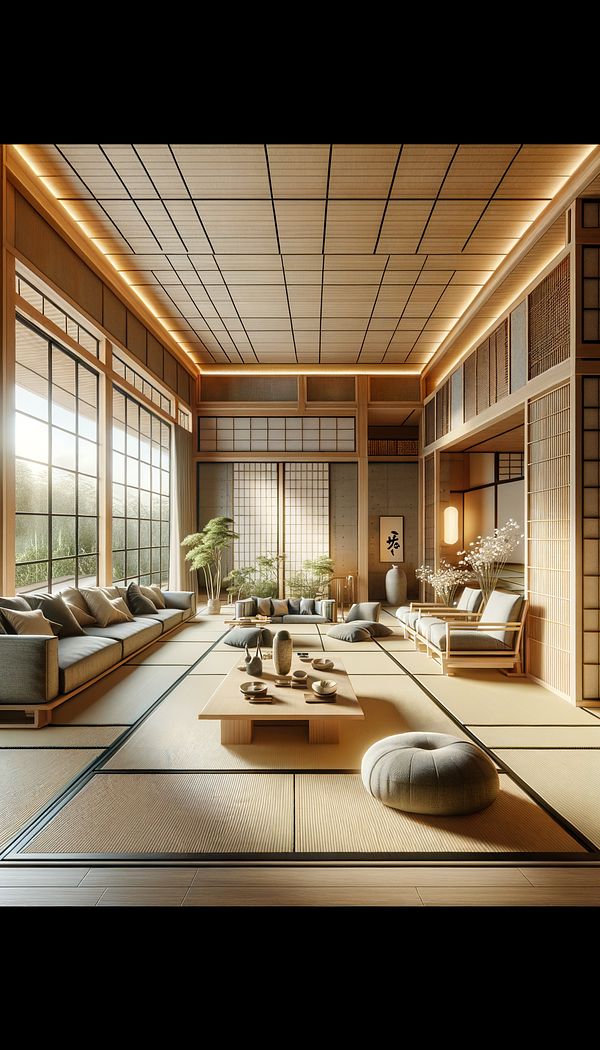What is Japanese Style?
Japanese Style in interior design refers to an aesthetic that emphasizes minimalism, natural materials, and a strong connection with nature.
Description
Japanese Style, often inspired by the traditional art and culture of Japan, is a design aesthetic that focuses on simplicity, functionality, and natural beauty. This interior design style is characterized by minimal clutter and a serene, tranquil atmosphere that promotes peace and tranquility. It incorporates natural materials such as wood, bamboo, and paper to create a warm and inviting space that feels connected to the natural world.
The use of neutral color palettes, with an emphasis on whites, blacks, browns, and greys, further enhances the minimalist ethos of Japanese Style. Spaces are designed to be functional and practical, often featuring open floor plans and multipurpose furniture that can be easily adapted to suit different needs. The integration of traditional Japanese elements such as tatami mats, shoji screens, and fusuma (sliding doors) adds an authentic touch to this design style.
Lighting plays a crucial role in Japanese Style, with an emphasis on natural light to create a soft, diffused atmosphere. When artificial lighting is used, it is chosen carefully to complement the natural aesthetics of the space. The concept of "Ma" or negative space is also essential, allowing rooms to breathe and providing a sense of balance and harmony.
Overall, Japanese Style is about creating a serene, harmonious environment that encourages reflection and relaxation, making it an ideal choice for those looking to bring a sense of calm and simplicity into their homes.
Usage
Japanese Style is ideal for those seeking to create a peaceful and minimalist living space. It is commonly applied in residential interiors but can also be found in commercial spaces like spas, restaurants, and boutique hotels that wish to evoke a sense of tranquility and mindfulness. Key elements such as tatami mats, shoji screens, and minimal furnishings are often used to achieve the distinctive look associated with this style.
FAQs
-
How can I incorporate Japanese Style into my home?
You can start by decluttering your space and adopting a minimalist approach to your interior design. Incorporate natural materials and earthy tones, use tatami mats or bamboo flooring, and consider adding sliding doors or shoji screens for an authentic touch. Focus on creating open, functional spaces and prioritize natural lighting.
-
What are some key elements of Japanese Style?
Key elements include minimalism, natural materials like wood and bamboo, neutral color palettes, tatami mats, shoji screens, fusuma (sliding doors), and a focus on natural light and negative space.
-
Is Japanese Style suitable for small spaces?
Yes, Japanese Style is particularly well-suited for small spaces due to its minimalist approach and emphasis on functionality and open floor plans. It encourages the use of multi-purpose furniture and clever storage solutions to maximize space efficiency.
Practical Application
To effectively apply Japanese Style in your interior design, start by decluttering and opting for a simple, neutral color scheme. Choose furniture and decor that are both functional and aesthetically pleasing, focusing on quality and craftsmanship. Incorporate natural materials and elements directly connected to nature to enhance the sense of tranquility. Prioritize natural lighting and consider the layout carefully to ensure open spaces that facilitate movement and relaxation. Remember, the essence of Japanese Style is to create a peaceful environment that fosters well-being through simplicity and connection with nature.
-
Design Styles478 articles
-
Lighting111 articles
-
Decorative Techniques322 articles
-
Space Planning & Layout134 articles
-
Materials & Textiles360 articles
-
TuscanTuscan refers to a design style inspired by the Tuscany region in Italy.
-
IndustrialIndustrial refers to a design style that draws inspiration from old factories and industrial spaces.
-
HalogenHalogen refers to a type of lighting technology.
-
Crackle GlazeA decorative finish creating a cracked pattern on surfaces.
-
ArabesqueAn intricate pattern of interlaced lines, often incorporating floral and geometric motifs.
